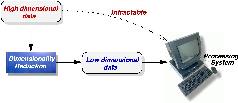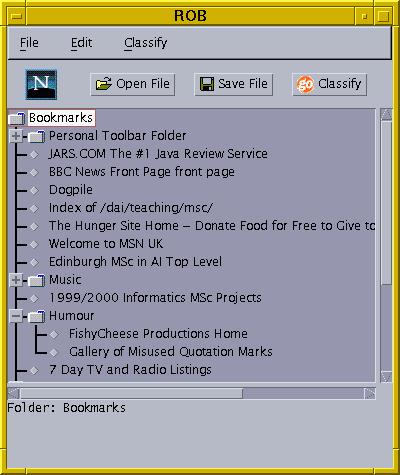Past
A description of some of my past research.
R.A.
 I looked into new methods for feature selection and rule induction, based on rough set theory and fuzzy-rough set theory. This also included a year spent on two-level LR models for forensic glass analysis.
I looked into new methods for feature selection and rule induction, based on rough set theory and fuzzy-rough set theory. This also included a year spent on two-level LR models for forensic glass analysis.
Ph.D.
 I investigated how Rough Set Theory and Fuzzy Sets may be combined for use in different aspects of the Knowledge Engineering process. The work primarily focusses on how fuzzy-rough sets can be used in the attribute reduction (feature selection) process. This research was funded by the EPSRC in conjunction with the Advanced Knowledge Technologies (AKT) project. AKT brings together a strong set of universities and complementary disciplines to tackle fundamental problems associated with the management of knowledge. The work also involved some Swarm Intelligence; in particular Ant Colony Optimization. The thesis can be be viewed here
I investigated how Rough Set Theory and Fuzzy Sets may be combined for use in different aspects of the Knowledge Engineering process. The work primarily focusses on how fuzzy-rough sets can be used in the attribute reduction (feature selection) process. This research was funded by the EPSRC in conjunction with the Advanced Knowledge Technologies (AKT) project. AKT brings together a strong set of universities and complementary disciplines to tackle fundamental problems associated with the management of knowledge. The work also involved some Swarm Intelligence; in particular Ant Colony Optimization. The thesis can be be viewed here
MSc.
 My MSc project was entitled “A Rough Set-Aided System for Sorting WWW Bookmarks”. The goal of the project was to investigate how useful Rough Set Theory (RST) may be in extracting information from an information-poor domain, namely the databases of bookmarks/favorites stored by web browsers. The resulting application classifies bookmarks using only the information stored in their URL and title fields (the web page that it points to is not examined). RST is used as a data reduction step before classification; it locates those attributes that contain the most important information for the classification task at hand. In text categorisation it is usually the case that such a dimensionality reduction must take place prior to classification, as the number of attributes involved renders most classifiers intractable. The system was implemented in Java (with a touch of Perl) and was designed in a modular fashion, allowing the various sub-modules to be replaced (if desired) in the future by alternative implementations.
My MSc project was entitled “A Rough Set-Aided System for Sorting WWW Bookmarks”. The goal of the project was to investigate how useful Rough Set Theory (RST) may be in extracting information from an information-poor domain, namely the databases of bookmarks/favorites stored by web browsers. The resulting application classifies bookmarks using only the information stored in their URL and title fields (the web page that it points to is not examined). RST is used as a data reduction step before classification; it locates those attributes that contain the most important information for the classification task at hand. In text categorisation it is usually the case that such a dimensionality reduction must take place prior to classification, as the number of attributes involved renders most classifiers intractable. The system was implemented in Java (with a touch of Perl) and was designed in a modular fashion, allowing the various sub-modules to be replaced (if desired) in the future by alternative implementations.
BSc.
 I studied Computer Science at Lancaster University for three years, culminating in a project entitled “Autonomous Actors in VR Movies“. The actors were VR people who employed a rule-base for decision making as they traversed their virtual world. Objects were available for them to pick up and use in their journey. Raycasting was used to give the actors vision so they could locate these objects and other actors. The project combined VRML and Java to produce an application that can be viewed using a web browser (if the browser has VRML viewing capabilities).
I studied Computer Science at Lancaster University for three years, culminating in a project entitled “Autonomous Actors in VR Movies“. The actors were VR people who employed a rule-base for decision making as they traversed their virtual world. Objects were available for them to pick up and use in their journey. Raycasting was used to give the actors vision so they could locate these objects and other actors. The project combined VRML and Java to produce an application that can be viewed using a web browser (if the browser has VRML viewing capabilities).
Leave a Reply